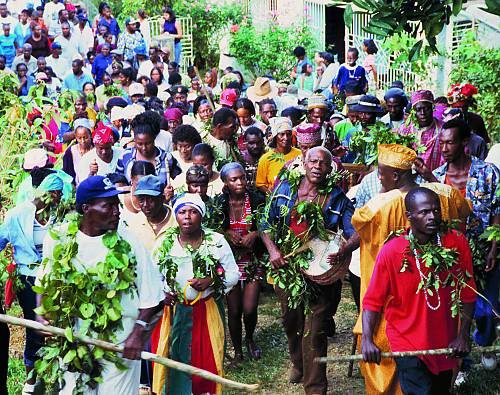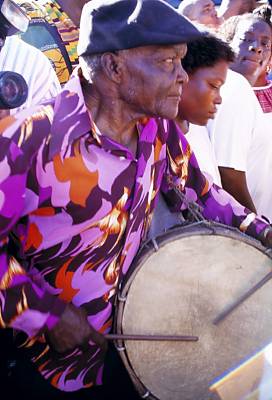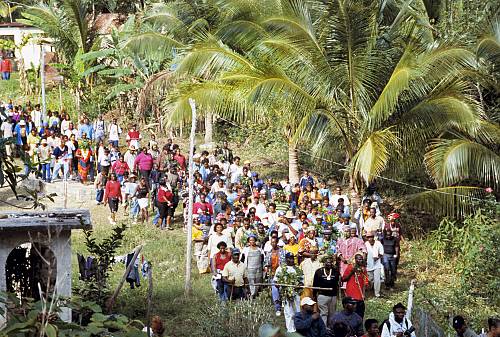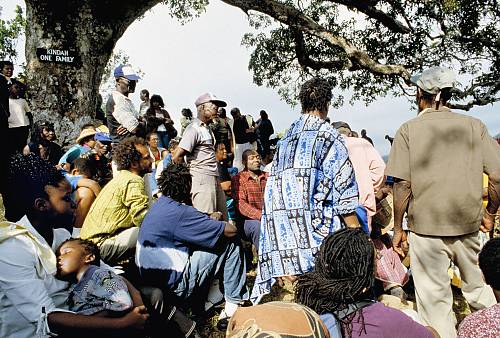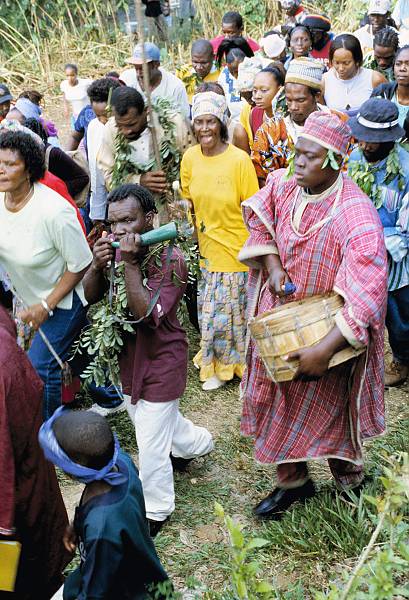Maroon heritage of Moore Town
Inscribed in 2008 (3.COM) on the Representative List of the Intangible Cultural Heritage of Humanity (originally proclaimed in 2003)
Situated in the highlands of eastern Jamaica, Moore Town is home to the descendants of independent communities of former runaway slaves known as Maroons. The African ancestors of the Moore Town Maroons were forcibly removed from their native lands to the Caribbean by Spanish slave traders in the sixteenth and seventeenth centuries. The term Maroon, derived from the Spanish word cimarrón (wild), refers to those slaves who fled the plantations in the early 1600s and established their own settlements in the Blue and Johncrow Mountains of eastern Jamaica. By the early eighteenth century, the Maroon communities controlled much of the eastern part of the island. In opposition to the expanding plantation system of the British, they formed well-organized and efficient underground military units. After decades of warfare, the British finally yielded to the communities’ demands for recognition of their autonomy by signing a treaty with the Maroons in 1739.
Hailing from West and Central African regions with diverse languages and cultural practices, the Moore Town Maroons elaborated new collective religious ceremonies that incorporated various spiritual traditions. These expressions and practices, which were then named Kromanti Play, continue to represent the very foundation of Maroon identity. During Kromanti ceremonies, dances, songs and specific drumming styles are performed to invoke ancestral spirits. These ceremonies also feature a language of African derivation, likewise named Kromanti, and rare medicinal preparations. As part of their heritage, the inhabitants of Moore Town also possess a unique system of communally-held “treaty lands”, a local political structure and the use of the abeng, a side-blown “talking” horn of Jamaican origin which serves as a means of long-distance communication.
Several decades of missionary opposition to Kromanti Play have driven this tradition partially underground and have led to serious schisms within the communities. Moreover, deteriorating economic conditions have forced many Maroons to migrate to other parts of Jamaica and abroad.

